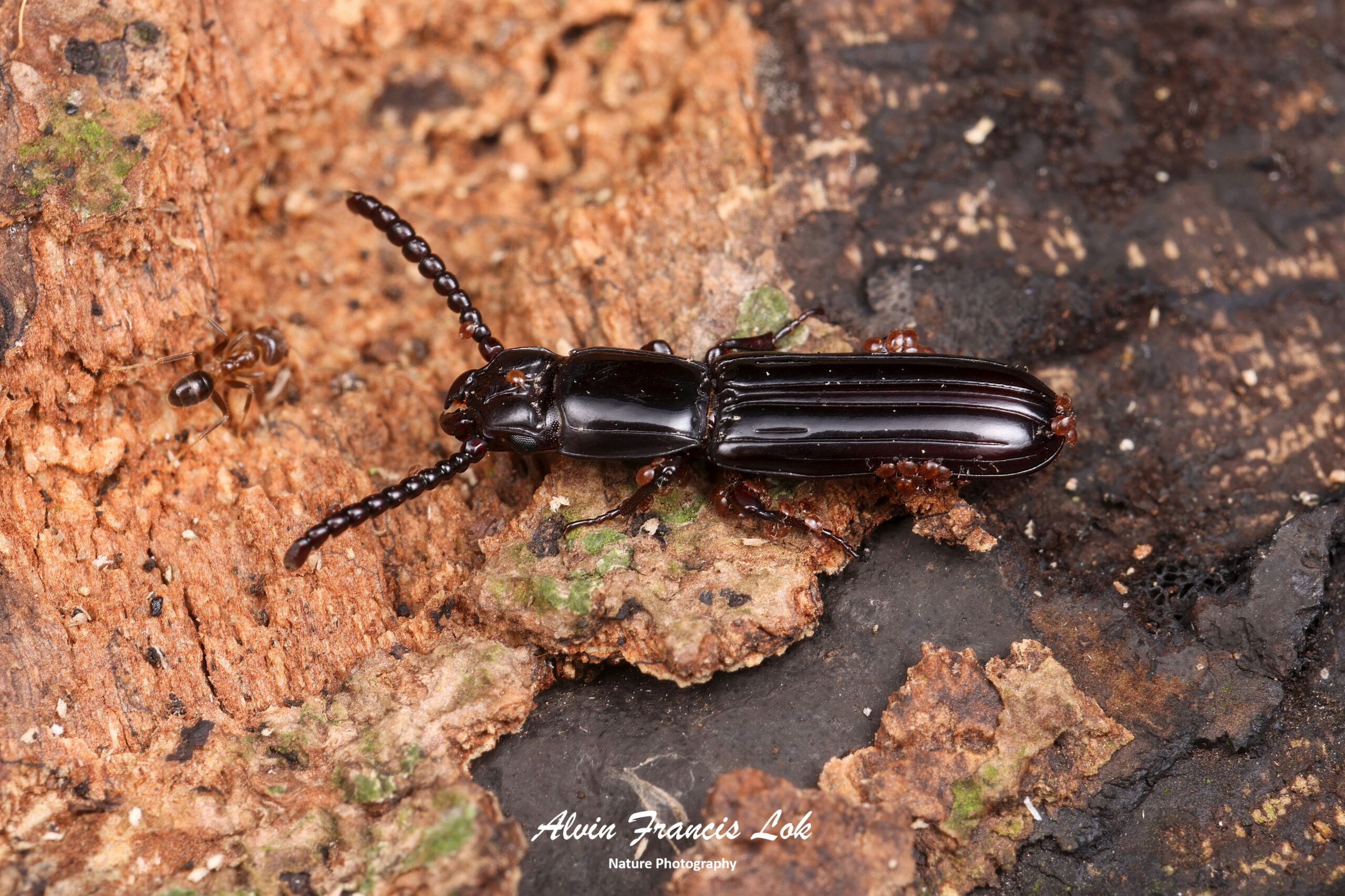Passandridae are a family of beetle notable for being one of the very few beetle families with larvae that are exclusively ectoparasitic on the immature stages of other beetles and Hymenoptera.
Adults are small to moderate sized beetles, 3-35mm, with heavily sclerotized bodies that are either dorso-ventrally compressed (genera occurring under bark) or subcylindrical in cross section (genera inhabiting wood-borer tunnels). Adults are generally brown or black, rarely with a color pattern, with prominent mandibles, confluent gular sutures, thick, moniliform antennae (antenna with equally sized spherical segments that looks like a string of beads), unequal tibial spurs on the front legs, and generally a characteristic system of grooves and/or carina on the dorsal surface.
Larvae are highly modified for their parasitoid habits. The first instar larvae are heavily sclerotized, flattened, and spiny. Later instar larvae are physogastric (swollen posteriorly), with simple setae, short, unsegmented legs, and reduced mouthparts. The larvae are especially associated with woodboring insects, such as longhorn beetles and weevils. The adults are likely predaceous.
Source: Wikipedia

(Singapore)